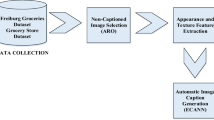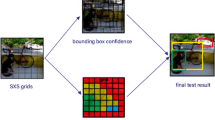Abstract
In the modern era, accessing the web is the major task for Visually Impaired (VI) people that creates opportunities to connect with social media as part of professional, political, and social life. One of the difficulties faced by VI users is accessing and understanding images online. The advancements in assistive technologies based on computer-vision (CV) assist the VI people in diverse scenarios such as grocery shopping, generation of alternative text, object recognition, understanding text documents, identifying people etc. In this study, to make the digital platform user-friendly for VI people, an automated system is developed to generate alternative (alt) text for online images that are not captioned or the alt text is not specified for the image. The proposed Deep Belief Network - Bald Eagle Search (DBN-BES) method offers an effective way for VI that allows automatic captioning of web images. Our proposed work consists of two stages. The initial stage is the selection of images that are not captioned, and this selection process is obtained using the Bald Eagle Search (BES) Algorithm. After the selection stage, alt text for corresponding images is produced with the help of the Deep Belief Network (DBN) model. Thus, the proposed DBN-BES model automatically generates alt text which helps the VI people to understand the image content better. The presented model routinely increases web accessibility, addresses massive image data being created daily, and makes the web accessible to multiple users around the globe.














Similar content being viewed by others
Data availability
Data sharing is not applicable to this article as no datasets were generated or analyzed during the current study.
References
Vtyurina A, Fourney A, Morris MR, Findlater L, White RW (2019) Bridging screen readers and voice assistants for enhanced eyes-free web search. In the world wide web conference, pp 3590–3594
Ismail A, Kuppusamy KS (2019) Web accessibility investigation and identification of major issues of higher education websites with statistical measures: a case study of college websites. J King Saud Univ-Comput Inf Sci 34(3):901–911
Tapu R, Mocanu B, Zaharia T (2020) Wearable assistive devices for visually impaired: a state of the art survey. Pattern Recogn Lett 137:37–52
Giraud S, Thérouanne P, Steiner DD (2018) Web accessibility: filtering redundant and irrelevant information improves website usability for blind users. Int J Hum-Comput Stud 111:23–35
Georgieva-Tsaneva G, Subev N (2018) Technologies, Standarts and approaches to ensure web accessibility for visually impaired people. Digit Preserv Present Cult Sci Herit 8:143–150
Brzostek-Pawłowska J, Rubin M, Salamończyk A (2019) Enhancement of math content accessibility in EPUB3 educational publications. New Review of Hypermedia and Multimedia 25(1–2):31–56
Akhil R, Gokul MS, Sanal S, Menon VKS, Nair LS (2018) Enhanced navigation cane for visually impaired. In: Ambient communications and computer systems. Springer, Singapore, pp 103–115
Zhang X, Ross AS, Fogarty J (2018) Robust annotation of mobile application interfaces in methods for accessibility repair and enhancement. In: Proceedings of the 31st annual ACM symposium on user Interface software and technology, pp 609–621
Nir HL, Rimmerman A (2018) Evaluation of web content accessibility in an Israeli institution of higher education. Univ Access Inf Soc 17(3):663–673
Doush I, AlMeraj Z (2019) Evaluating the accessibility of kuwaiti e-government websites. Jordanian Journal of Computers and Information Technology (JJCIT) 5(03):1
Raymaker DM, Kapp SK, McDonald KE, Weiner M, Ashkenazy E, Nicolaidis C (2019) Development of the AASPIRE web accessibility guidelines for autistic web users. Autism in Adulthood 1(2):146–157
Cena F, Rapp A, Torre I (2019) Internet of things: an opportunity for advancing universal access. In: Web Accessibility: A Foundation for Research, pp 777–790
Hersh MA (2008) Assistive technology for visually impaired and blind people. In: Johnson, Michael A (ed.), Disability and Assistive Technology Systems. Springer, London, vol 1
Presley I, D’Andrea FM (2009) Assistive technology for students who are blind or visually impaired: a guide to assessment. American Foundation for the Blind
Rayini J (2017) Library and information services to the visually impaired persons. Library Philos Pract (e-journal) 1510
Kuber R, Yu W, Strain P, Murphy E, McAllister G (2020) Assistive multimodal interfaces for improving web accessibility. UMBC Information Systems Department Collection.
Xie I, Babu R, Lee TH, Castillo MD, You S, Hanlon AM (2020) Enhancing usability of digital libraries: designing help features to support blind and visually impaired users. Inf Process Manag 57(3):102110
Matoušek J, Krňoul Z, Campr M, Zajíc Z, Hanzlíček Z, Grůber M, Kocurová M (2020) Speech and web-based technology to enhance education for pupils with visual impairment. Journal on Multimodal User Interfaces 14(2):219–230
Oliveira R, Prata A, Miranda JC, de Abreu JF, Almeida AM (2021) Accessibility Solutions for Visually Impaired Persons: A Digital Platform Conceptualization.” In: Handbook of Research on Multidisciplinary Approaches to Entrepreneurship, Innovation, and ICTs, IGI Global, pp 331–348
Bhandari A, Prasad PWC, Alsadoon A, Maag A (2021) Object detection and recognition: using deep learning to assist the visually impaired. Disability and Rehabilitation: Assistive Technology 16(3):280–288
Shahira KC, Lijiya (2021) A towards assisting the visually impaired: a review on techniques for decoding the visual data from chart images. IEEE Access 9:52926–52943
Zhang X, Liu X, Sarkodie-Gyan T, Li Z (2021) Development of a character CAPTCHA recognition system for the visually impaired community using deep learning. Mach Vis Appl 32(1):1–19
Makkar T, Kumar Y, Dubey AK, Rocha Á, Goyal A (2017) Analogizing time complexity of KNN and CNN in recognizing handwritten digits. In: 2017 fourth international conference on image information processing (ICIIP), IEEE, pp 1–6
Blachnik M (2015) Reducing time complexity of svm model by lvq data compression. In: Artificial Intelligence and Soft Computing: 14th International Conference, ICAISC 2015, Zakopane, Poland, June 14-18, 2015, Proceedings, Part I 14. Springer International Publishing, pp 687–695
Nadi A, Moradi H (2019) Increasing the views and reducing the depth in random forest. Expert Syst Appl 138:112801
Lauer F (2016) On the complexity of switching linear regression. Automatica 74:80–83
Khayyat M, Elgendy IA, Muthanna A, Alshahrani AS, Alharbi S, Koucheryavy A (2020) Advanced deep learning-based computational offloading for multilevel vehicular edge-cloud computing networks. IEEE Access 8:137052–137062
Rafiq M, Rafiq G, Agyeman R, Choi GS, Jin S-I (2020) Scene classification for sports video summarization using transfer learning. Sensors 20(6):1702
Elgendy IA, Zhang W-Z, He H, Gupta BB, El-Latif A, Ahmed A (2021) Joint computation offloading and task caching for multi-user and multi-task MEC systems: reinforcement learning-based algorithms. Wirel Netw 27(3):2023–2038
Sridevi M, Kharde M (2020) Video summarization using highlight detection and pairwise deep ranking model. Procedia Computer Science 167:1839–1848
Elgendy IA, Muthanna A, Hammoudeh M, Shaiba H, Unal D, Khayyat M (2021) Advanced deep learning for resource allocation and security aware data offloading in industrial mobile edge computing. Big Data 9(4):265–278
MacLeod H, Bennett CL, Morris MR, Cutrell E (2017) Understanding blind people’s experiences with computer-generated captions of social media images. In: Proceedings of the 2017 CHI Conference on Human Factors in Computing Systems, pp 5988–5999
Guinness D, Cutrell E, Morris MR (2018) Caption crawler: enabling reusable alternative text descriptions using reverse image search. In: Proceedings of the 2018 CHI conference on human factors in computing systems, pp 1–11
Salisbury E, Kamar E, Morris M (2017) Toward scalable social alt text: conversational crowdsourcing as a tool for refining vision-to-language technology for the blind. In: Proceedings of the AAAI Conference on Human Computation and Crowdsourcing, vol 5, pp 147–156
Wu S, Wieland J, Farivar O, Schiller J (2017) Automatic alt-text: computer-generated image descriptions for blind users on a social network service. In proceedings of the 2017 ACM conference on computer supported cooperative work and social computing, pp 1180–1192
Author information
Authors and Affiliations
Corresponding author
Ethics declarations
Conflict of interest
Authors declare that there is no conflict of Interest.
Additional information
Publisher’s note
Springer Nature remains neutral with regard to jurisdictional claims in published maps and institutional affiliations.
Rights and permissions
Springer Nature or its licensor (e.g. a society or other partner) holds exclusive rights to this article under a publishing agreement with the author(s) or other rightsholder(s); author self-archiving of the accepted manuscript version of this article is solely governed by the terms of such publishing agreement and applicable law.
About this article
Cite this article
Tiwary, T., Mahapatra, R.P. Enhancement in web accessibility for visually impaired people using hybrid deep belief network –bald eagle search. Multimed Tools Appl 82, 24347–24368 (2023). https://doi.org/10.1007/s11042-023-14494-y
Received:
Revised:
Accepted:
Published:
Issue Date:
DOI: https://doi.org/10.1007/s11042-023-14494-y




